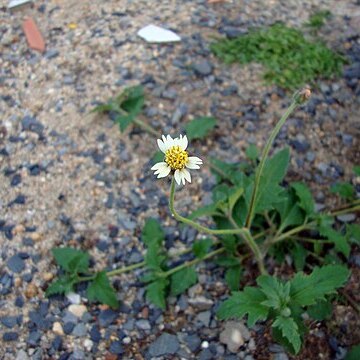Annual or perennial herbs. Leaves opposite (or alternate in non-weedy species). Capitula terminal, solitary on long stalks (or paniculate in non-weedy species), radiate or discoid; involucre 1–5-seriate; paleae linear and keeled. Ray florets female; disc florets hermaphrodite, cylindric; anthers with sagittate base and terminal appendage; style arms linear, pubescent, style-base with globose swelling. Achenes with pappus of many plumose bristles.

